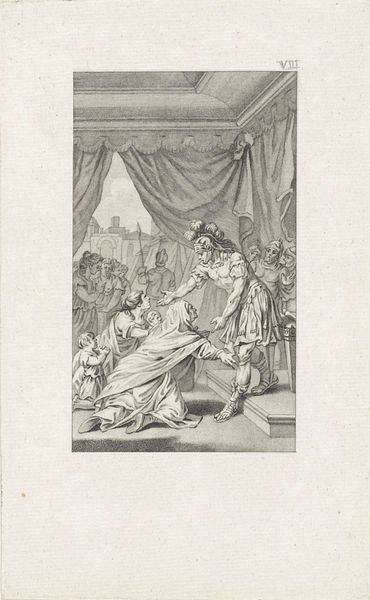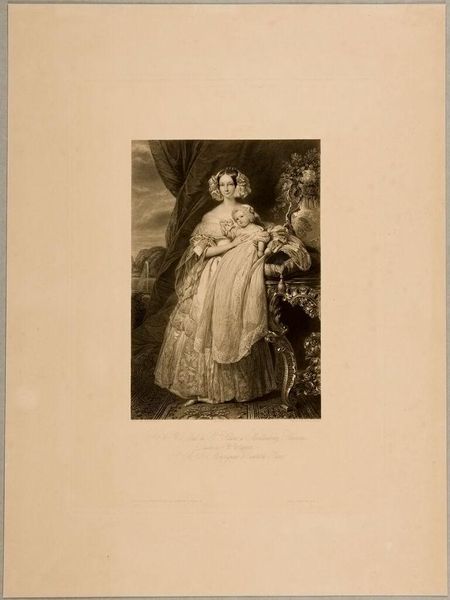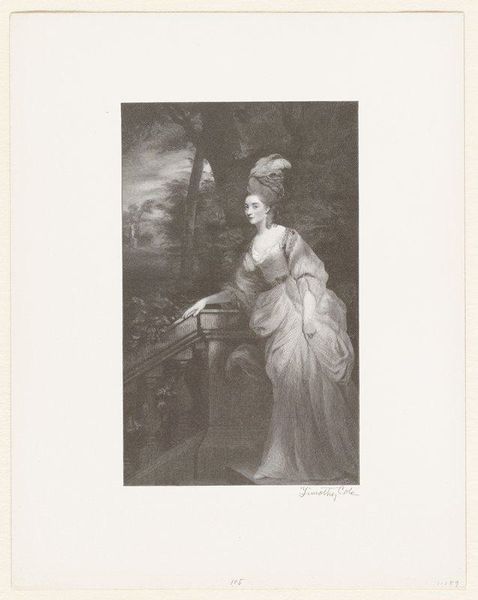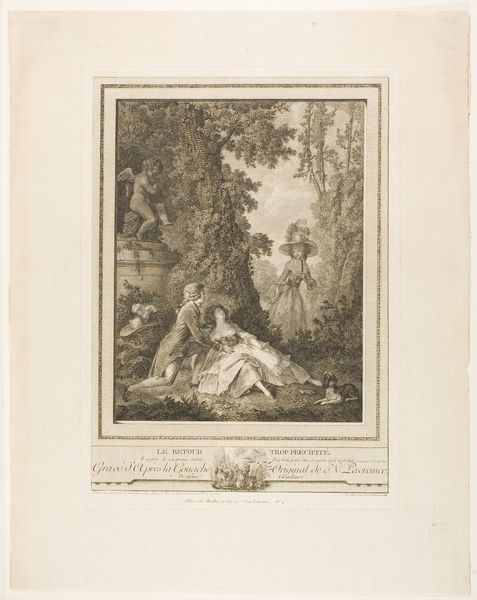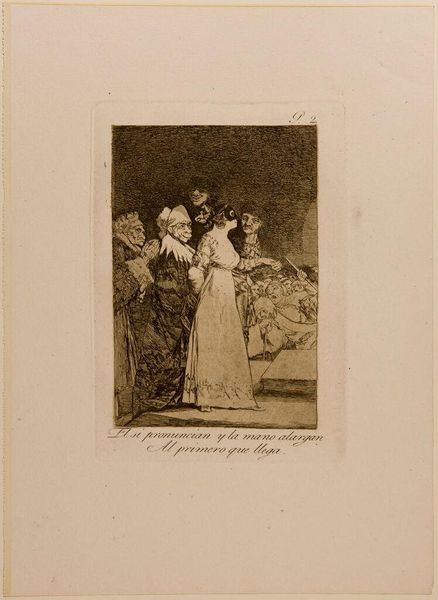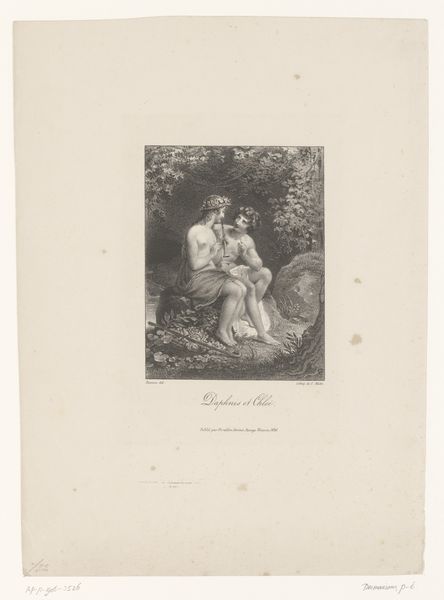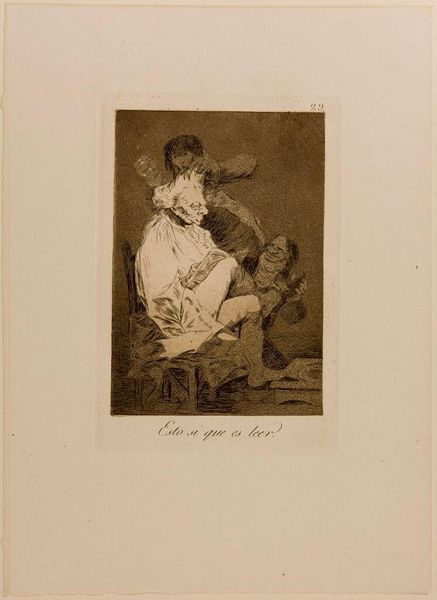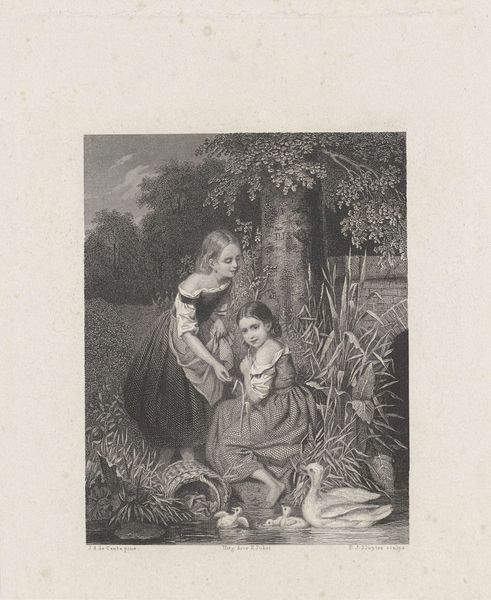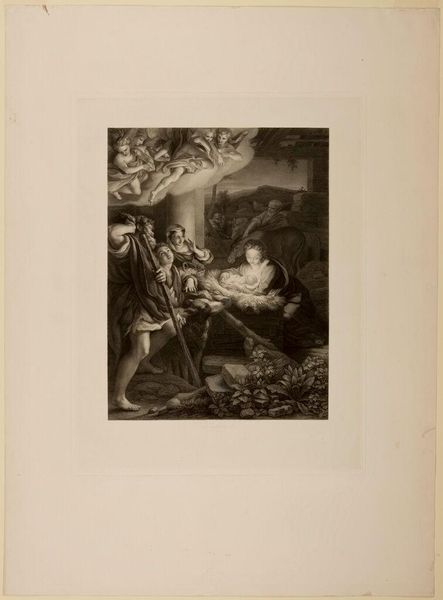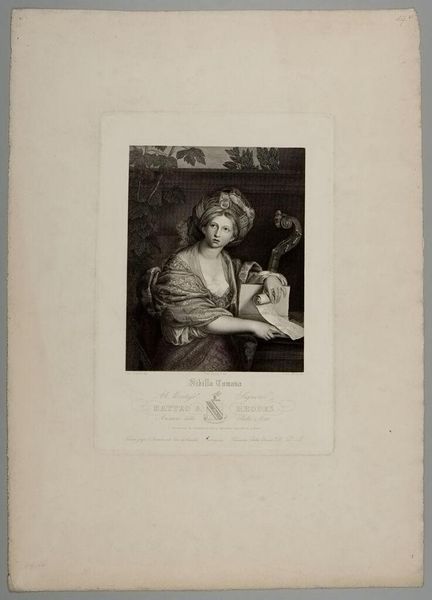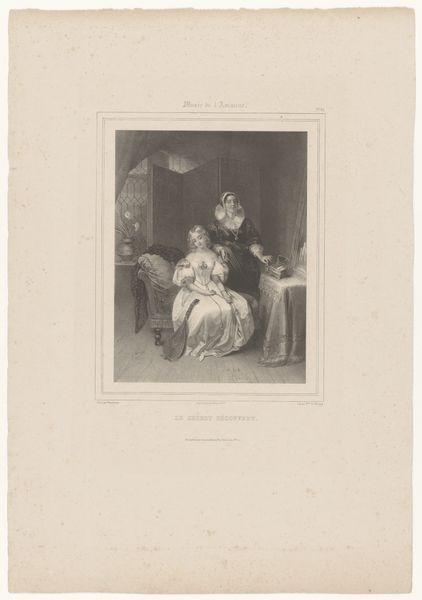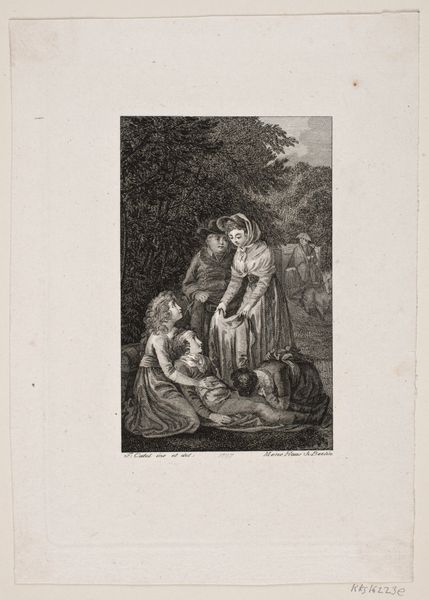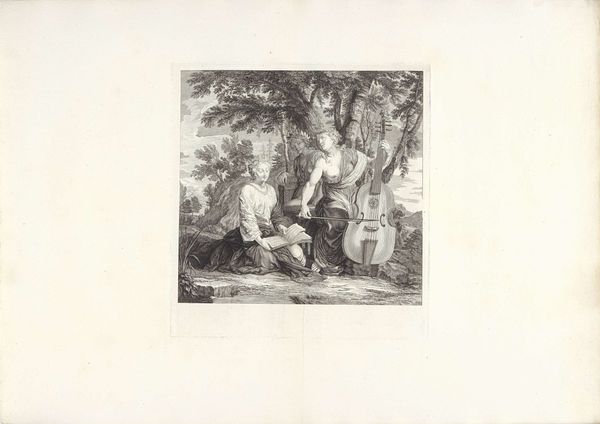
The Empress Maria Theresia and a Beggar Woman's Child c. 19th century
Dimensions: image: 44.3 Ã 33.4 cm (17 7/16 Ã 13 1/8 in.) plate: 56.7 Ã 43 cm (22 5/16 Ã 16 15/16 in.) sheet: 69.8 Ã 53.5 cm (27 1/2 Ã 21 1/16 in.)
Copyright: CC0 1.0
Curator: Let’s explore Albrecht Schultheiss's engraving, "The Empress Maria Theresia and a Beggar Woman's Child." The dimensions of this work are approximately 44.3 by 33.4 centimeters. Editor: The immediate contrast between the richly adorned empress and the sleeping, plainly dressed figure is striking. The textures rendered—the fabrics versus the rough stone—speak volumes. Curator: Indeed. This piece touches upon Maria Theresa's self-fashioned image as a compassionate ruler, often juxtaposed against the backdrop of societal inequality. Editor: And the medium itself—engraving—a process demanding precision and labor, mirrors the rigid social structures of the time, with the artist meticulously crafting this narrative. Curator: The composition invites us to consider how such images reinforced political ideologies and the role of art in shaping public perception of power. Editor: Looking at the materiality, the way light and shadow are deployed, it’s almost a commentary on the visible and invisible labor that sustains such displays of grandeur. Curator: Quite insightful! Schultheiss offers us a glimpse into the complexities of 19th-century social dynamics and art’s function within them. Editor: Reflecting on the process further reveals the societal lens through which we interpret such historical moments.
Comments
No comments
Be the first to comment and join the conversation on the ultimate creative platform.
